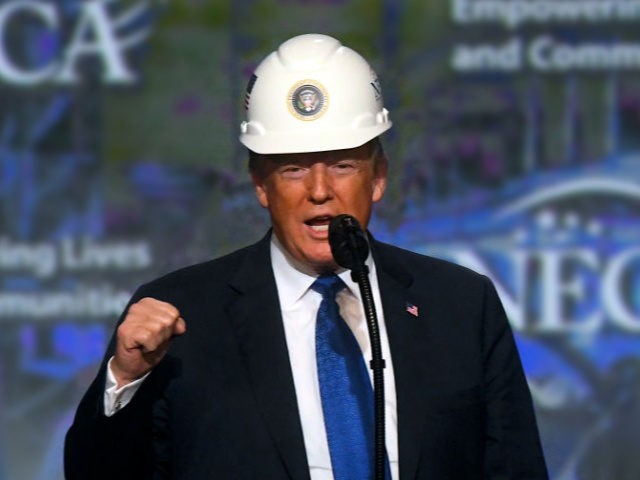Even while the trade war with China escalated in early May, manufacturers in New York State saw significantly more business activity and turned much more optimistic.
The New York Fed’s May Empire State Manufacturing Survey’s general business conditions index climbed eight points to 17.8, its highest level in six months. That was the second consecutive monthly improvement.
The general conditions outlook, which asks about expectations for conditions six months from now, surged nearly 20 points to a buoyant 30.6.
President Donald Trump announced that tariffs on $200 billion of imports from China would rise to 25 percent on Sunday, May 5th. The survey was sent out May 1 and most of the survey results were received by May 10th, the day tariffs were officially hiked. China’s announcement of its own tariff hike came after most–but not all–of the survey results were in.
That makes this the first look at how escalating trade tensions might impact the economy. And the results suggest the answer is very little. Economy watchers will look to Thursday’s report from the Philadelphia Fed on its manufacturing survey to see if the Empire State’s results are confirmed.
The positive report is a marked contrast to the disappointing industrial production and retail sales data released on Wednesday morning. But those were reports of data from April, while the Empire State survey is a read on current conditions and expectations. Still, the retail sales and industrial production numbers are considered “hard data” based on figures that will be used to calculate economic growth while the Fed survey is “soft data” based on responses to questions posed to about 200 manufacturing firms.
Taken together, however, the data indicate that while April started slow, manufacturing conditions and expectations may have improved. The trend is in the right direction, at least.
New orders, unfilled orders, and shipments were all on the upswing. Inventories declined, which can be a positive for future production.
The employment picture was mixed. Responses indicated that employment gains were small and there was no change in the average workweek. But manufacturers expect solid increases in employment going forward.
There was no sign of inflation, tariff induced or otherwise. Both the prices paid and prices received index were unchanged.

COMMENTS
Please let us know if you're having issues with commenting.